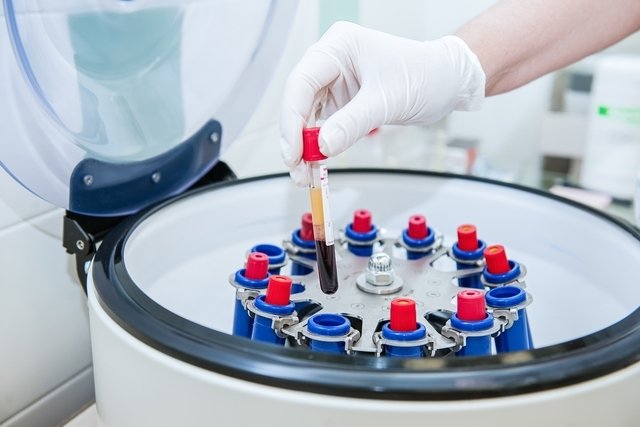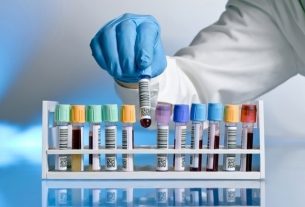The ASLO test, also called ASO, AEO or antistreptolysin O, aims to identify the presence of a toxin released by the bacteria Streptococcus pyogenesstreptolysin O, which is normally associated with cases of pharyngitis or rheumatic fever and glomerulonephritis, in the most severe cases.
The antistreptolysin O result can change 1 to 3 weeks after infection with the bacteria, so it is one of the main tests for diagnosing infection with the bacteria. Streptococcus pyogenes, especially when there is a frequent sore throat that takes a long time to resolve. Find out more about Streptococcus pyogenes.
When this bacteria is not identified and treated correctly, there is the possibility of developing complications and symptoms such as shortness of breath, chest pain or pain and swelling in the joints, for example, and it is essential to consult a general practitioner or infectious disease specialist so that treatment can be started. more appropriate treatment.

What is it for
The ASLO test serves to identify the presence of a toxin produced by bacteria Streptococcus pyogenes and, therefore, it is normally indicated when the person presents recurrent symptoms of pharyngitis, such as:
- Redness in the throat;
- Swelling in the throat;
- Difficulty swallowing;
- General malaise;
- Fever.
Furthermore, this test may be requested when a person has elevated antistreptolysin O levels even without symptoms of pharyngitis, as it may indicate that the bacteria has managed to spread through the blood and reach other organs, with a greater risk of developing glomerulonephritis, scarlet fever or rheumatic fever, for example, in which the person may also experience shortness of breath, pain and swelling in the joints and red spots on the skin. Learn how to identify rheumatic fever.
Don’t ignore your symptoms!
How is done
The ASLO exam must be carried out fasting for 4 to 8 hours, according to medical or laboratory recommendations and is carried out by collecting a blood sample that is sent to the laboratory for analysis. It is important to indicate, at the time of the exam, whether you are taking any medication, such as antibiotics, corticosteroids or immunosuppressants, as they may interfere with the test results.
In some cases, when there are symptoms involving the throat, it may also be recommended by the doctor to collect a sample from the throat to identify the infectious agent responsible for this symptom.
If infection by Streptococcus pyogenes, an antibiogram is performed to check the most appropriate antibiotic for the treatment. Understand how the antibiogram is performed.
What does the result mean
Normal antistreptolysin O values may vary according to the laboratory and age, however, in general it is considered normal:
- Adults: up to 200 IU/mL;
- Children: up to 150 IU/mL.
In the case of a positive result, that is, when a quantity of antistreptolysin O above what is considered normal is identified, the doctor normally requests a repeat of the test after 10 to 15 days to check whether the levels of this antibody in the blood are constant or decrease. over time, checking whether the infection is active or not.
ASLO positive
Although positive results are characteristic of infection by Streptococcus pyogenes, not everyone develops symptoms of rheumatic fever, glomerulonephritis or tonsillitis, for example, however they should be monitored by a doctor, carrying out periodic blood tests and cardiac check-ups. See what tests are required to evaluate the heart.
Furthermore, some situations can lead to an increase in this antibody without it necessarily being related to the bacteria. Streptococcus pyogenessuch as viral hepatitis, tuberculosis and sample contamination, and it is recommended to carry out other tests to confirm the diagnosis.
Bibliography
- GEERTS, I et al. The clinical-diagnostic role of antistreptolysin O antibodies. Acta Clin Belgian. 66. 6; 410-415,, 2011
- SEN, ES; RAMANAN, AV. How to use antistreptolysin O titre. Arch Dis Child Educ Pract Ed. 99. 6; 231-238, 2014
- GUTIÉRREZ, Clara et al. Reference values of antistreptolysin O and asymptomatic carriers of β-hemolytic streptococci in adolescents and adults of the Francisco Linares Alcántara Municipality, Venezuela. Chilean journal of infectious diseases. 32. 6; 689-694, 2015
- BVS. Is positive ASLO diagnostic of Rheumatic Fever?. Available at: <https://aps.bvs.br/aps/aslo-positivo-e-diagnostico-de-febre-reumatica-2/>. Accessed on 23 Nov 2021

Sign up for our newsletter and stay up to date with exclusive news
that can transform your routine!
Warning: Undefined array key "title" in /home/storelat/public_html/wp-content/plugins/link-whisper-premium/templates/frontend/related-posts.php on line 12
Warning: Undefined array key "title_tag" in /home/storelat/public_html/wp-content/plugins/link-whisper-premium/templates/frontend/related-posts.php on line 13



